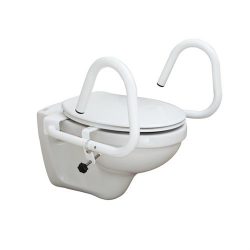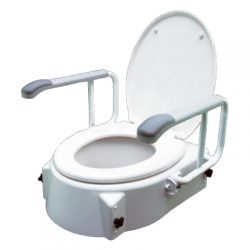Selecting and Installing Toilet Seat Raisers
A correctly chosen toilet seat raiser can significantly improve a client’s independence, comfort, and safety, but selecting the wrong model can lead to installation challenges and frustration. At GMobility, we have encountered cases where a prescribed seat raiser is incompatible with the client’s toilet due to specific mounting requirements. These issues can cause delays, additional costs, and unnecessary inconvenience for both therapists and clients.
This guide provides a clear, practical overview of key technical considerations, product compatibility, and best practices for prescribing and quoting toilet seat raisers. By understanding these factors, occupational therapists can make more informed recommendations, helping clients achieve a safer and more functional bathroom setup.
Key Considerations for Toilet Seat Raisers
- Understanding Toilet Mounting Types: Blind Holes vs. Exposed Mounting Bolts
One of the biggest challenges in toilet seat raiser installation is blind hole mounting.
- Blind Holes: Some toilets have “blind holes,” meaning the mounting bolts cannot be accessed from underneath. This can limit the ability to install certain toilet raisers that affix directly to the pan. An additional blind hole fixing kit can sometimes be used to create a threaded hole for mounting on this type of toilet.
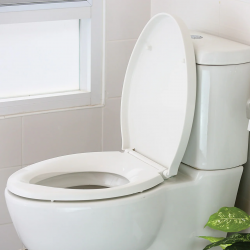
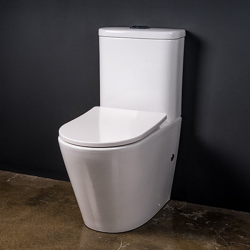
- Exposed Mounting Bolts: Toilets with exposed bolts allow easier installation and compatibility with a broader range of seat raisers.
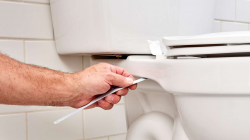
- Ensuring Compatibility with Blind Hole Toilets
The following options are not affixed to the toilet pan with bolts, as such they are compatible with blind mounting holes:
- K Care toilet seat raiser
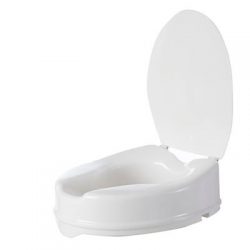
Blind hole fixing kit will make below compatible:
- Throne Support Rails – Compatible with blind hole installations but requires a compatible seat.
- Numo Arms – Can be installed with a blind hole fixing kit.
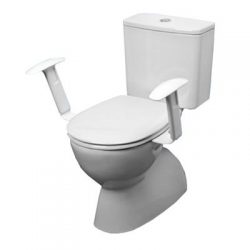
- ETAC Hi-Loo Fixed – Comes with an official blind hole mounting kit.
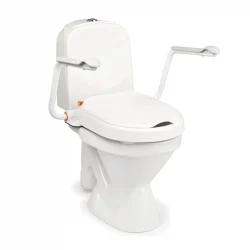
- Choosing the Right Product for the Client’s Needs
Different toilet seat raisers serve different purposes. Below is a breakdown of the advantages and limitations of each option:
| Product | Advantages | Limitations |
| Standard Over Toilet Frames | Versatile, available in different sizes, very simple installation | Some clients dislike the appearance |
| Toilet Seat Raiser (60mm, 100mm) | Simple, cost-effective | No armrests, only secured by clamping force |
| Toilet Seat Raiser with Swing Back Arms | Installed option with armrests, height adjustable | More complex installation, not easily removable for clients |
| Numo Arms | Installed armrest option, works with blind hole fixing kit | No raiser, arms are fixed (do not swing away) |
| Throne Support Rails | Sturdy, bariatric model available, compatible with 50mm and 80mm raisers | Complex setup, not easily removable for clients |
| ETAC Hi-Loo Fixed | First-party blind hole mounting solution, easy to clean | Complex setup, not easily removable for clients |
Best Practices for Prescribers
- Verify the toilet’s mounting type (blind holes vs. exposed bolts) before prescribing a seat raiser.
- Ensure all required parts are quoted with GMobility to prevent delays and additional callouts.
- Consider user mobility needs, including whether they require armrests, swing-away functionality, or a bariatric option.
- Communicate with installers if there is uncertainty about compatibility before finalising a recommendation.
Conclusion
Choosing the right toilet seat raiser involves more than just height adjustment. It is crucial to ensure proper fit, stability, long-term comfort, safety, ease of use, and suitability for your client. By following this guide, occupational therapists can help facilitate seamless installations and minimise compatibility issues.
For further guidance, GMobility’s Assistive Technology Specialists are available to provide expert advice on product selection and installation. We work closely with occupational therapists to identify the best solutions for each client’s needs.
For assistance, contact us today and let our friendly team help you find the most suitable mobility solutions for your clients.
If you require more assistance in choosing the right equipment to suit your needs, contact our team today for more information. You can call us on 1 300 00 4662 or send an email to info@gmobility.com.au.

 Log In
Log In

